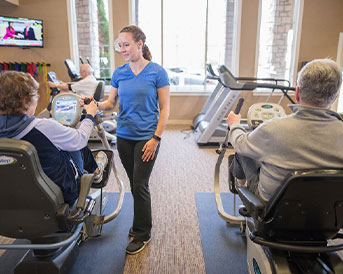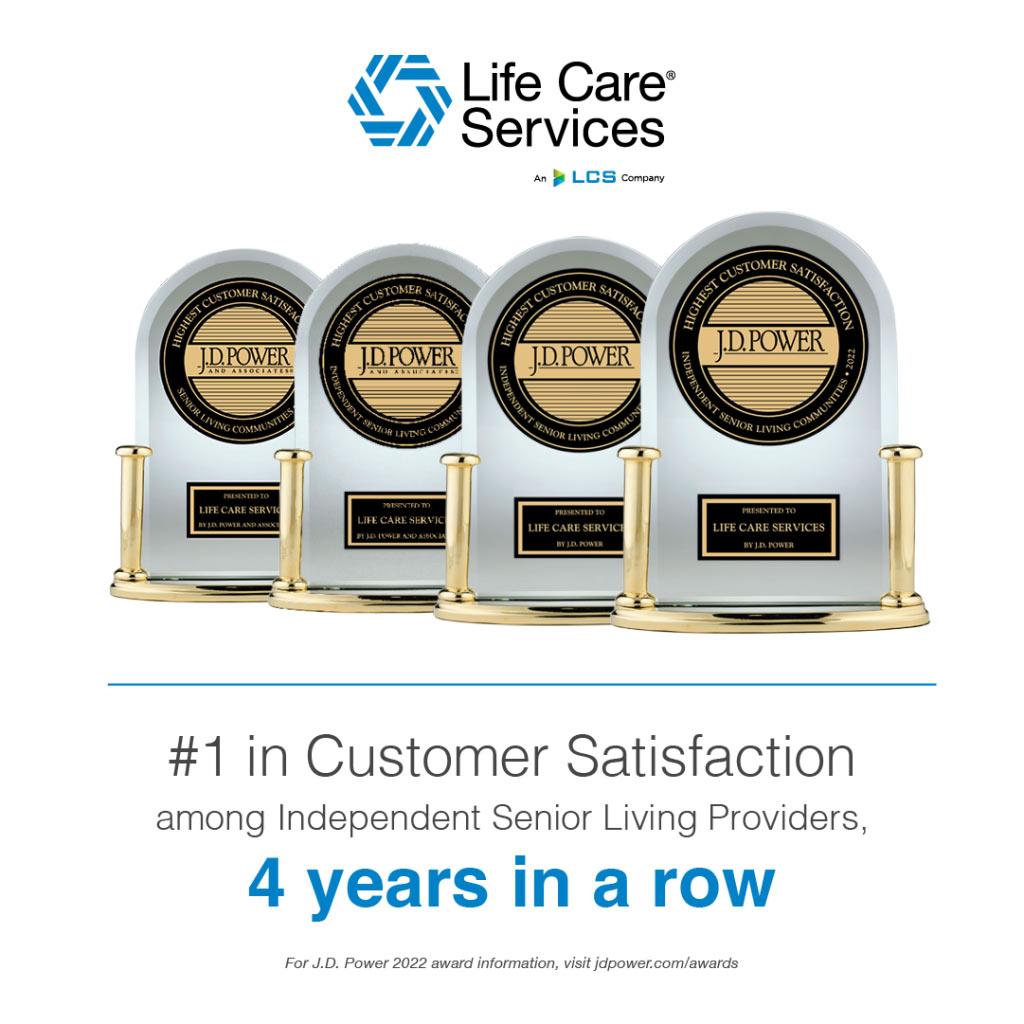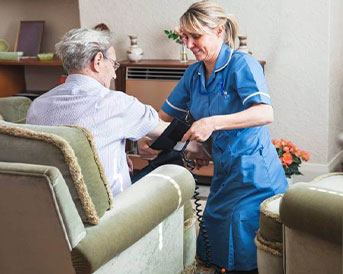How Much Exercise Do Seniors Need?
Category Blog | Time 3 Minutes | Published October 05, 2022

It’s important to talk to your doctor before starting any exercise program. They will advise on programs based on current health and fitness levels.
There’s no way around it. Regular exercise for seniors can greatly improve not only physical health but mental health too. We know how good exercise is at any age, but for seniors, it’s especially important to get out and move. We’ll explore how much exercise is too much for seniors, along with the benefits of exercise, what types are great for seniors and more.
Importance of Health and Fitness for Seniors
Engaging in regular exercise might be the closest thing to the fountain of youth. Regular physical activity has been shown to reduce the risks of heart disease, high blood pressure, colon cancer, and diabetes in older adults. Additional benefits of exercise for seniors include:
- Better balance and a decrease in falls
- Improved mood and outlook
- Greater overall energy levels
- Improved bone health
- Stronger muscles
- Greater range of motion and flexibility
- Improved quality of sleep
The best news about exercise and seniors is that it’s never too late to start. Even if you have lived a generally sedentary life, starting and sticking to a regular exercise program can improve the quality of your life.
What is Moderate Exercise vs. Vigorous
As you begin a fitness program you may hear a lot about moderate and vigorous exercise. Aerobic activity at a moderate intensity includes brisk walking or hiking, bicycle riding, water aerobics, and even yard work. You’ll know you are engaging in moderate exercise by using a 10-point scale. Sitting would rate at a zero. A casual stroll along a flat surface might rate a 2. Moderate intensity is at a 5-6 when you can feel your heartbeat, and you’ll be breathing harder, but you can still have a conversation. Anything above a 6 is considered vigorous.
You can also check with your doctor and ask about what a target heart rate would be for your age and level of fitness. Purchase a heart rate monitor for an easy way to track your moderate and vigorous intensity levels.
The intensity level will vary from person to person. What’s moderate for some may be vigorous for someone else. As you become more fit, you’ll see that you can exercise longer and your level of fitness will improve. Any moderate activity could be amped up and turned into a vigorous workout.
How Often Should Seniors Exercise
How often a senior should exercise will depend on current level of fitness and what their capabilities are. If you’re just starting to get back into an exercise routine and after your doctor’s approval, it’s best to ease into workouts and work up to the recommended time of:
- 2 ½ hours (150 minutes) for moderate intensity
- 1 hour and 15 minutes (75 minutes) for vigorous activityBroken down, that’s about 30 minutes a day, five days a week of moderate exercise, and 15 minutes a day for five days a week for vigorous activity.Because everyone’s fitness level is different, it’s important to do physical activities at a level that is appropriate for you and your capabilities.Remember, physical exercise is not only done at the gym. If you mow the yard at a moderate intensity level and it takes 30 minutes, you’ve just had a workout. Additional ways to add in physical activity include:
- Playing with the grandkids
- Taking a pet for daily walks
- Walking to the bus stop or grocery store
- Taking the stairs
- Yard work
How Much Exercise is too Much for Seniors?
Too much exercise for seniors can increase the risk of physical injury and even a fatal medical event, such as a heart attack. Engaging in exercise without warming up or simply doing too much in one work out session can increase the risk of injury. It is important that you check with your doctor before engaging in any physical exercise routine. Explore the best low-impact exercises for seniors.
After the doctor’s okay, you may feel eager and excited to get back into it. That’s a great attitude! When you begin a new workout, ease into the routine, take it slow and note how you feel before and after. With changing bodies, there may be exercises that you no longer can or need to do. In most exercises, there’s a modification or substitute you can do to accommodate mobility issues and other issues.
After exercising, you’re bound to feel stiff and sore muscles for a day or two after. But others sign of discomfort such as nausea, shortness of breath, or fatigue are signs you may be overdoing it. Or it could be signs of something more severe, and you should talk with your doctor immediately.
Types of Exercise Best for Seniors
Within our LCS® Communities, there are opportunities to engage in group exercise classes, walking clubs and wellness programs and other physical activities.
To get a well-rounded exercise plan, be sure to include aerobic activity, weight training, and strength and balance training.
Aerobic activities include:
- Walking
- Jogging
- Dancing and aerobics classes
- Water aerobics
- Swimming
- Bicycling
Stretching and balance training include general stretching exercises, yoga, Pilates, tai chi, ballet, and other forms of dance. Yoga and Pilates can be adapted for those with mobility issues.
Weight training may sound intimidating, but the benefits are hard to ignore. Many weight training programs can be modified for those with limited mobility or who are wheelchair or walker-dependent. If you feel like you need help in the weight room, gyms and recreation centers have personal trainers who can help with form. You shouldn’t do all these activities in one day. If you don’t know how to properly perform an exercise, enlist a personal trainer who can help you maintain good form.
You shouldn’t do all these activities in one day. Set up a schedule such as Monday, Wednesday, and Friday for weight training and Tuesday and Thursday for stretching and balance training. The important thing is to be as consistent as you can.
The Best Time to Start is Now
Starting something new, like an exercise program, has its challenges. It may come as a surprise that we can no longer do certain activities or exercises due to age or injury. But it is important to remember that it really is never too late to get in shape and be the fittest you can be.
If you’re thinking of moving into a retirement community for yourself or a loved one, be sure to check out the amenities and services offered. As fitness becomes more integral to your life, you’ll want to live in a community that will be supportive of that lifestyle. LCS® has over 130 communities across the United States. Our communities have some of the finest fitness services around, including swimming pools, state-of-the-art fitness centers, personal training, and more. To find a community, talk with us today!

Burcham Hills Management Company Ranked #1
News • December 01, 2022
in J.D. Power 2022 U.S. Senior Living Satisfaction Study Burcham Hills, managed by LCS®, An LCS® Company, announced that its management
Read Article

GALLUP EXCEPTIONAL WORKPLACE AWARDED TO LCS
News • May 09, 2023
We are thrilled to announce that LCS® has been named a Gallup Exceptional Workplace Award Winner for 2023. This prestigious award recognizes
Read Article

Age Is Just a Number: Five Signs It's Time for Assisted Living
Blog • February 27, 2023
Modern senior living communities are comfortable, pleasant places to live and offer wonderful amenities and services. Today's assisted living is
Read Article
